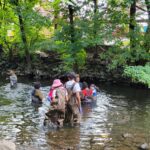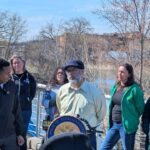Last Wednesday, I sat next to my best friend eating McDonald’s meals on apartment steps. We did it as an impromptu Friendsgiving celebration. It was an amazing night despite all the circumstances surrounding it.
Thanksgiving is similar to Columbus Day in that the focus should really be shifted to the indigenous people who have lost so much due to the forces of colonialism. Rather than being about the feast the Pilgrims enjoyed when they arrived in America, it should be about the genocide of indigenous tribes that came afterwards. More about the complex history behind the commemoration of indigenous people on American holidays can be read in “Happy Indigenous Peoples’ Day!”
I stayed up all night cooking various dishes for the occasion. From sweet potatoes to beets to stuffing to barley (no turkey because I am quirky), my small refrigerator slowly became filled to the brim. Before eating, my mother said a prayer in Amharic that can be translated to, “Dear God. We are thankful for the food you have prepared in front of us. We understand that not everyone is lucky to have a meal in front of them and we would like to reiterate our gratitude.”
My mother’s words along with the meal I had with my best friend began to tap into my negative feelings I have towards the holiday. On one hand, I stand with indigenous people. I believe that the National Day of Mourning should be the official name for the day and that we should take this time as a nation to address our country’s dark history. But on the other hand, there was something profound about having a day dedicated to simply being grateful for what we have around us. I am really happy to have a best friend to eat with and a mother who is patient with my cooking. Although it is essential to express this in small ways everyday, a holiday meant for that is even more important.
For that reason, I believe it is necessary to say thank you to all the people who have contributed to the vitality of the Bronx River. The Bronx River has been transforming rapidly over the past couple of decades and went from practically unusable to the baseline of our 17 parks. That transformation is thanks to none other than the time and effort of many people who volunteered and worked for organizations to help improve the River.





